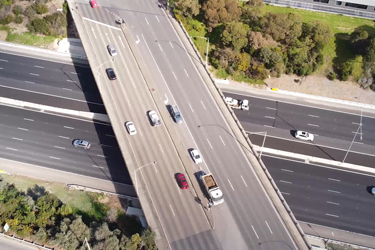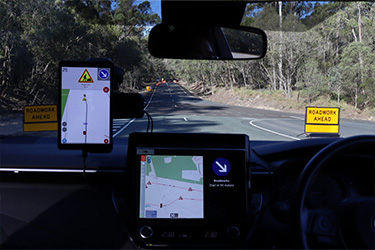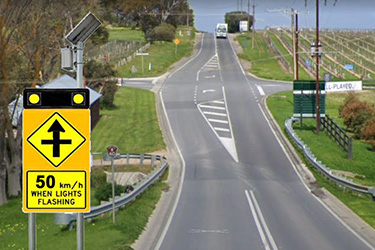How are connected bus stops changing the way people travel?
SAGE Automation, Published: January 14, 2021 - Updated: January 14, 2021 (4 min read)

A streamlined public transport journey is a key pillar of smart cities and holds out benefits for individual users, wider communities and the environment.
In light of these benefits, improving user experience on public transport has long been a focus of SAGE Automation and has driven innovation in their transport capability.
Starting with the end-user in mind and designing solutions around the touchpoints of passengers is critical to boosting patronage and building community trust.
Technology recently implemented at public bus stops across Australia showcases the smart features that produce increased efficiency and safety outcomes for commuters.
Monitoring passenger movement
Passive pedestrian and vehicle detection holds huge potential to revolutionise the public transport user experience. Monitoring units attached to strategic bus stops provide greater visibility of movement and dwell times of patrons to transport agencies and bus operators.
This data gives transport providers an understanding of how long patrons are waiting at stops and when stops are at their busiest. This real-time capture of peaks in demand and wait times can then improve the agility of operations by boosting services to match the trends of patron use.
Attaching devices to the buses that service monitored bus stops creates pairing data which can detect passenger travel paths and transfer between bus routes. This data gives real-time visibility of patron movement from one bus to another, revealing high-use routes that can be serviced to match demand and inform route changes.
Predictive analytics play an important role in the movement away from a scheduled to an agile approach to timetables and services. Bus operators can use real-time data to predict peaks in demand and position services ahead of time to avoid passenger delays.
SAGE Edge devices used in connected bus stop projects have a low power draw (7 watts) and can be run using either solar or mains power. They operate on an open platform system, allowing for integration with any Application Programming Interface (API) system. The 70-metre detection radius allows for detection in varied physical environments, including hard to access or undulating landscapes.
Data from the units can then be displayed on a dashboard for transport network operators to see vehicle placement on the grid, real-time and trend data on passenger numbers on services and waiting time at bus stops, as well as vehicle performance telematics data such as mileage wear on components, suspension, vehicle speed and powertrain health, assisting with predictive maintenance scheduling decreasing vehicle downtime.
Read more: SAGE Automation partner on intelligent connected bus of the future
Better bus stop experiences for commuters
Waiting at a bus stop can be a frustrating experience, particularly when there is no accurate way of finding out when the next bus will arrive. Monitoring units can alleviate this by providing real-time expectations of bus arrivals at upgraded stops dubbed ‘eStops’, which feature digital displays that replace paper timetables.
This information can be delivered to the patron via an app on their phone or an e-paper display. The electronic display can be continually updated to give users the latest information relevant to their journey.
This allows transport agencies and bus operators to communicate critical notifications in real-time, keeping passengers up-to-date and ensuring accurate information is delivered at the point of action. Patrons can find out if they have missed their bus, or if it is yet to arrive.
Warnings for unexpected delays can also be communicated. Passengers will ultimately have access to in-vehicle infotainment services and real-time service updates such as vehicle arrival time, seat availability and security alerts.
Additional features of connected bus stops that improve the user journey:
- PA speaker systems – enable critical information to be communicated through a speaker system, providing real-time updates to patrons who may not have access to mobile devices.
- T-Coil connectivity – improves accessibility by ensuring hearing impaired patrons have the latest route updates.
- Emergency buttons - improve safety through the use of emergency buttons that can be pressed for immediate connection to emergency services.
- Solar lighting and CCTV footage – low-cost lighting, as well as continual collection and storage of CCTV is important for improving safety outcomes for patrons.
Digital kiosks are also providing a new way for patrons to interact with bus stops. These colourful smart touchscreens are highly engaging, allow for discovery of services and wayfinding, as well as promoting events to the community. Kiosk display information makes it easy for people to discover nearby points of interest and upcoming events, as well as improving accessibility by making it easier to find the closest and most convenient services.
Technology that enhances the transport user experience holds the potential to transform the way patrons interact with mass transport. Read more about SAGE Automation’s transport solution here.









